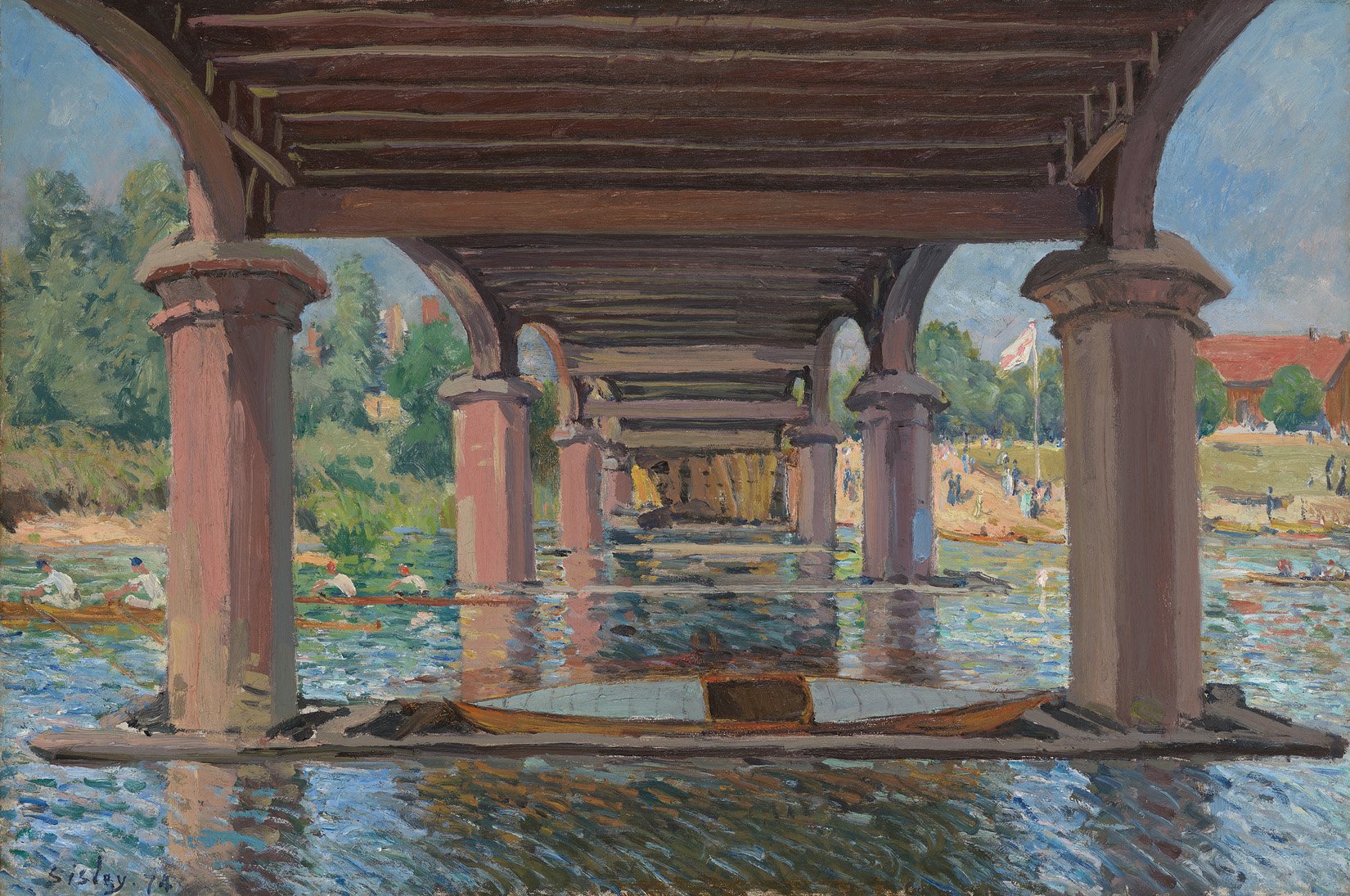Alfred Sisley
Under Hampton Court Bridge, 1874

Alfred Sisley
Under Hampton Court Bridge, 1874
Kunst Museum Winterthur, Schenkung von Dr. Herbert und Charlotte Wolfer-de Armas, 1973
Foto: SIK-ISEA, Zürich (Martin Stollenwerk)
Impressionism was born in 1874. An exhibition was organised in Paris under the title of “première exposition impressionniste", which launched a new style of painting and caused a sensation. This style of painting was supposed to interact directly with reality and be an unalerted representation of the sensory impression.
Alfred Sisley was one of these innovators. A collector invited him to England in the same year and Sisley spent the summer there. He was exceptionally attracted to Hampton Court on the Thames, the location of the new rail bridge - a construction of cast iron and brick. Bridges and rowing were modern motifs–technology and contemporary life had begun replacing romantic landscapes.
Sisley portrays the bridge from an unusual perspective, from underneath, so that the supporting framework is above the viewer. We are looking at the massive, dramatically foreshortened pairs of columns leading symmetrically into the distance. The rowing boats appear minute in between them.
In traditional painting compositions were prepared with numerous preparatory studies, but in contrast to this Sisley worked spontaneously and quickly in situ, to capture the effects of the light. He used short brushstrokes to portray the dynamic and changeable movement of the water.


